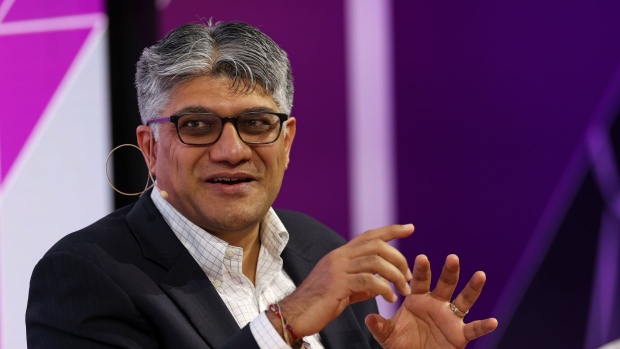Apr 29, 2024
Unthinkable Revival of Nuclear Plants Is a Reality in US Shift
, Bloomberg News

(Bloomberg) -- A month after the US offered $1.5 billion to restart one shuttered nuclear power plant, there’s a growing sense among officials in the industry and government that it may not be the last.
“There are a couple of nuclear power plants that we probably should, and can, turn back on,” said Jigar Shah, director of the US Energy Department’s Loan Programs Office.
Shah’s office in March approved a loan to Holtec International Corp. to reopen the Palisades nuclear plant in Michigan. The company bought the facility when it closed in 2022, planning to decommission it. But officials including Governor Gretchen Whitmer almost immediately began calling for it to reopen, and Holtec has now shifted gears, planning for it to start producing power again in late 2025. That may spur other companies to follow suit.
“A lot of the other players that have a nuclear power plant that has recently shut down and could be turned back on are gaining that confidence to try,” said Shah in an interview. He declined to name specific plants.
It’s a sign of how much the conversation around nuclear power’s future has changed, as the fight against global warming intensifies. While many environmentalists remain fiercely opposed to nuclear plants and their radioactive waste, others now see them as a way to produce large amounts of power without spewing greenhouse gases. California officials recently decided to extend by five years the life of the state’s last nuclear plant, which had been scheduled to shut down in 2025, and the facility’s owner says it’s interested in keeping the plant running longer.
Read More: California’s Last Nuclear Plant Should Stay Open, PG&E CEO Says
More than a dozen US reactors shut down in recent years because they were too costly to operate, struggling to compete against renewable power and plants that burn cheap natural gas. Conventional wisdom long held that such closures were permanent. Now, the industry is rethinking that view.
“The environment has shifted significantly in a really short period of time,” said Doug True, chief nuclear officer for the Nuclear Energy Institute trade group. “I think there are companies that are looking at whether a restart makes sense.”
But not all shuttered plants can be reopened. Some are already being dismantled, such as Indian Point, north of New York City, and San Onofre, south of Los Angeles. Not all owners have done the costly maintenance needed to keep a facility in good enough shape to justify bringing it back. True estimates there may be only five reactors suitable for resurrection. He declined to name them.
One potential candidate may be Pennsylvania’s Three Mile Island, site of the nation’s worst nuclear accident. Although the plant’s Unit 2 suffered a partial meltdown in 1979, Unit 1 kept running for decades, finally closing in 2019.
Unit 1 is owned by Constellation Energy Corp., which has no current plans to switch it back on. However, Chief Executive Officer Joe Dominguez supports the idea of restarting plants, and in an email, he did not rule out reopening Three Mile Island.
“Restarting closed nuclear plants offers another opportunity for the industry to add clean, reliable energy to the grid, as is currently underway at Palisades in Michigan,” said Dominguez, whose company operates the biggest nuclear plant fleet in the US. “While that effort has sparked discussion about Three Mile Island Unit 1, which was shuttered for economic reasons in 2019, we have made no decision on the future of the plant.”
While the federal government has not made a wholesale effort to revive shuttered plants, it sees reactors and their carbon-free power as “extremely valuable assets,” said Michael Goff, principal deputy assistant secretary for the Energy Department’s Office of Nuclear Energy. Some closed plants clearly have the potential to be reopened, he said.
“Unless you do something irrevocable, they can be turned around,” Goff said.
©2024 Bloomberg L.P.






